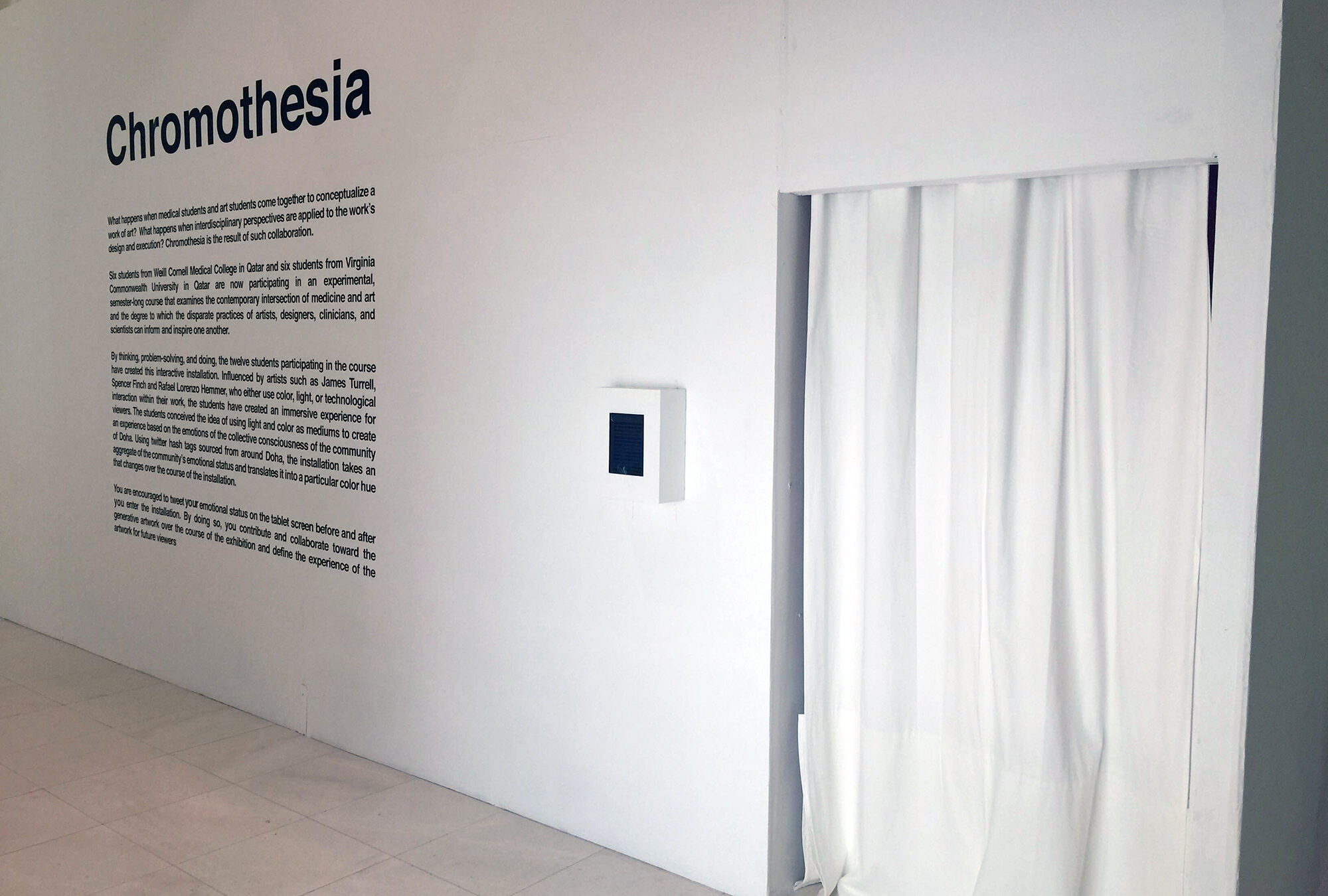- Academics
- Admissions
- Enrollment & Registration
- Research
- Academic & Creative Spaces
- Strategic Partnerships
- Our Impact
- Student Affairs
- Alumni
- About VCUarts Qatar
- Community & Continuing Education
ADMISSIONS FOR FALL 2025 NOW OPEN
Chromosthesia, Exploring the Intersection of Art and Medicine
April 30, 2015

The Art and Medicine Project is an interdisciplinary collaboration between Virginia Commonwealth University in Qatar (VCUQatar) and Weill Cornell Medical College in Qatar (WCMC-Q), allowing medical students to rethink medical decision-making and patient care and art students to incorporate science into their creative practice.
Lead instructor, Professor Thomas (Rhys) Himsworth and the Co-Principal Investigators Amy Andres of VCUQatar and Professors Alan S. Weber and Stephen Scott of WCMC-Q designed the project as a one-semester special topic art seminar. The seminar ran from January 2015 to April 2015, with a final exhibition due to open to the public in the fall of 2015. The Art and Medicine Project grew out of the four faculty members’ mutual interest in investigating how art, design and medicine can create synergies that lead students to more informed, reflective, collaborative and interdisciplinary methods and practices.
During the project, students were challenged to work together on various assignments, including the design of their first exhibition, “Chromosthesia,” an immersive experience that enabled visitors to interact at the intersection of medicine and contemporary art. Visitors were encouraged to submit their emotional status either through their own Twitter account or on a provided tablet before and after entering the installation. In doing so, they became active participants as each emotion was assigned a corresponding color that would be projected through the exhibition space. Through “Chromosthesia,” students and visitors learned that there is an extraordinary language within the visual world that is often perceived unconsciously.
This experience can also be described as a colorization of the senses. When asked about the inspiration for this exhibition, Himsworth said: “Students were enthused by various artists that were discussed during class, such as James Turrell, an American artist focusing his pieces on light and space. Another stimulus was the large-scale interactive installations created by Mexican-Canadian electronic artist Rafael Lozano-Hemmer.” Himsworth added that “Chromosthesia” was the first interactive exhibition of its kind in Qatar with the capacity to collect the emotional data of visitors during its exhibition period.
According to Yanal Shaheen, a WCMC-Q student, the project opened his eyes to a new world of seemingly disparate experiences, now brought together through contemporary art and the medical humanities. He said: “It has only been one session and I’ve already started to realize, as a medical student, the beauty of art and its vitality to a humane experience of life. This course is truly enjoyable, innovative, and eye-opening: I’ve never thought that such two seemingly different fields can have that large of an influence on each other in numerous ways and dimensions.”

